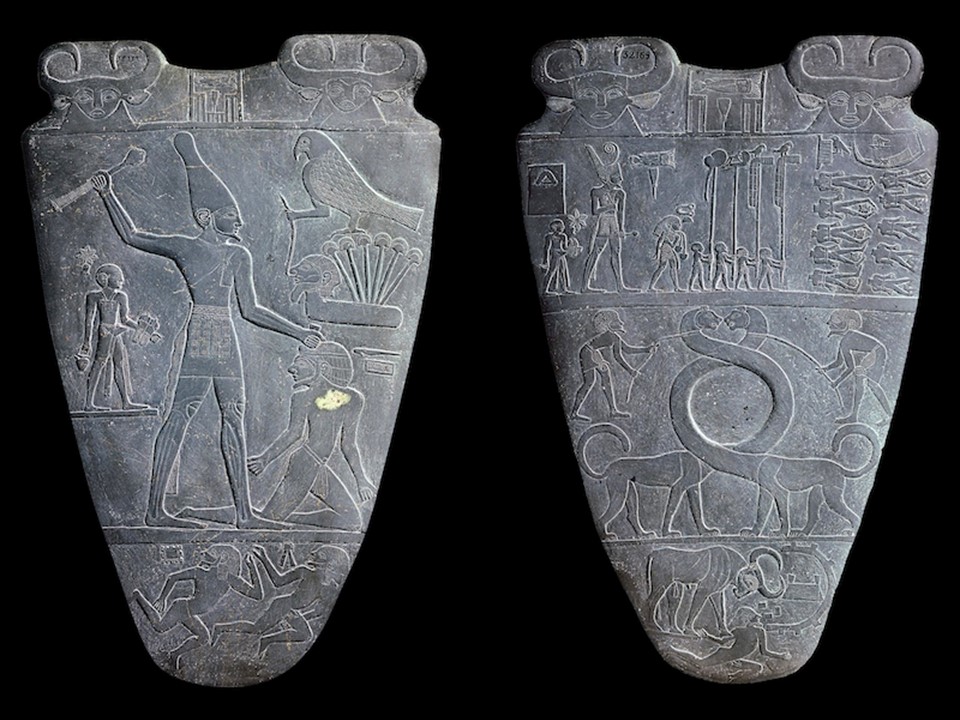
The Ancient Egyptian civilization, famous for its pyramids, pharaohs, mummies, and tombs… flourished for thousands of years. How important was it, and what was its lasting impact? Our first Lesson: Introduction to Egypt of the Pharaohs will set the tone!!!
First, I will turn to Herodotus, nicknamed the “Father of History” for his writings on various nations, and the author of the first comprehensive history of Egypt. According to Herodotus, the Theban priests of Egypt believed… that the first man who became king of Egypt was Min; and that in his time all Egypt except the district of Thebes was a swamp, and none of the regions were then above water which now lie below the lake of Moiris, to which lake it is a voyage of seven days up the river from the sea: and I thought that they said well about the land; for it is manifest in truth even to a person who has not heard it beforehand but has only seen, at least if he have understanding, that the Egypt to which the Hellenes come in ships is a land which has been won by the Egyptians as an addition, and that it is a gift of the river… https://www.gutenberg.org/files/2131/2131-h/2131-h.htm
We will then proceed to discuss the Geography of Egypt, its Chronology, and how it all started with the unification of Upper (Southern) Egypt and Lower (Northern/Delta) Egypt under a single ruler, Narmer or Menes, that occurred c. 3000 BC.
Ceremonial Palette of Narmer (Menes), 1st Dynasty, c. 3100 BC, the Back side
1. The surface is divided into 3 registers. 2. The larger middle register depicts Narmer wearing the White Crown of Upper (Southern) Egypt. On the other side of the Palette, he wears the Red Crown of Egypt indicating he is the ruler of both lands. 3. The pharaoh is ready to execute a submissive enemy. 4. The same story is told symbolically by the figure of the falcon, the god Horus representing the king, which leads a captive man whose body is shown as a papyrus clump representing the defeated people of the Delta (Lower Egypt). 5. The living pharaoh is the embodiment of god Horus. 6. The sandal bearer holds Narmer’s sandals indicating that he stands on holy ground, so what he did was an act approved by the gods. 7. The lower register depicts dead enemies. 8. At the top of the palette between the heads of goddess Hathor (cow head, goddess of the heavens) is shown the serekh containing the king’s name.
Ceremonial Palette of Narmer (Menes), 1st Dynasty c. 3100 BC, the Front side
1. The palette is divided into four registers. 2. The top register is the same on both sides. 3. The second register from the top presents king Narmer, wearing the Red Crown of Lower Egypt and accompanied by his officials, inspecting the decapitated corpses of his enemies. Once more, he is depicted barefoot. 4. In the third register the entwined necks of two animals form the central hollow of the palette, where kohl was placed. The stylized representation of the two animals suggests Mesopotamian influence and probably symbolizes unity. 5. In the lower register, Narmer depicted as a bull is presented storming an enemy citadel.
Finally, we will conclude the day’s Introductory Lesson, by discussing the Longevity of the Egyptian civilization, its need for Stability and Consistency, and the role of the Pharaoh.
For the Lesson 1 PowerPoint, The Art Of Ancient Egypt- Introduction – The Palette of Narmer, please… Click HERE!
For a Timeline of Ancient Egypt, please… Click HERE!
Learn, through a National Geographic Video, how Ancient Egypt contributed to society with its many cultural developments, particularly in language and mathematics… https://www.youtube.com/watch?v=hO1tzmi1V5g